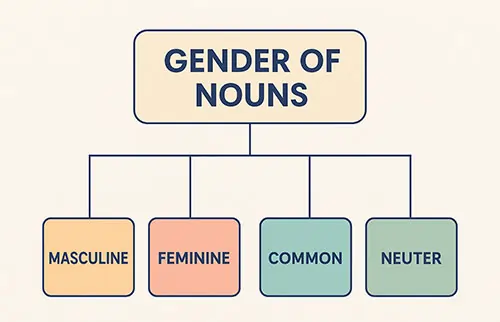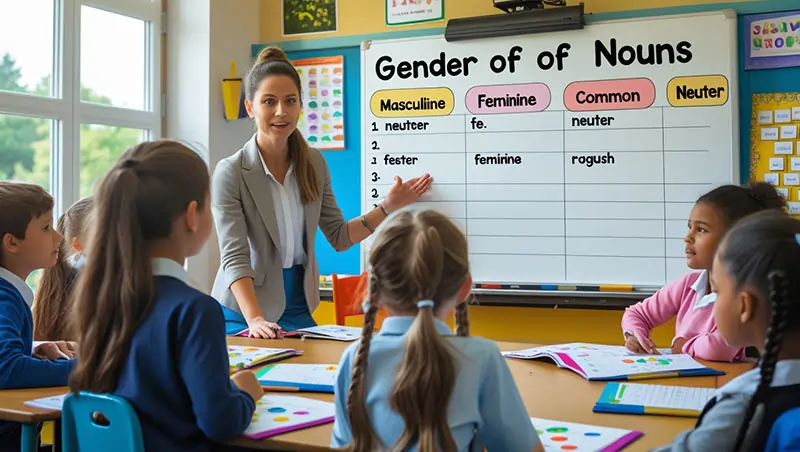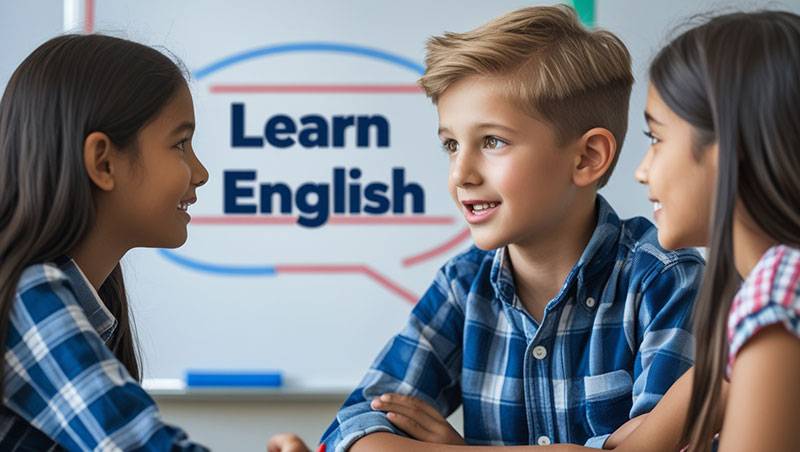Understanding Gender of Nouns: A Complete Worksheet-Based Approach
1. Introduction to Gender in Grammar
Nouns are very important in English grammar because they stand for people, animals, places, and things. Among the many classifications of nouns, gender of nouns is a fundamental concept. Young learners and ESL students can better understand how to make sentences and follow the rules for agreement if they understand this idea.
Depending on the subject they stand for, nouns are grouped into groups based on their gender. This gender classification doesn’t just include biological differences; it also includes rules about grammar. Using noun worksheets in a structured way can make learning easier and help you remember the idea better.
2. Types of Gender Nouns
There are four main types of gender for nouns in English:
| Gender Type | Description | Example Nouns |
| Masculine | Refers to male beings | boy, king, uncle, rooster |
| Feminine | Refers to female beings | girl, queen, aunt, hen |
| Common | Refers to both genders | teacher, doctor, student |
| Neuter | Refers to non-living things | table, car, book |
Gender Nouns Classification

There are different rules for how to use grammar for each gender category, especially when it comes to telling stories, assigning roles, and referring to objects.
3. Importance in Sentence Structure
It is important to know the gender of nouns because it affects:
- Pronoun Agreement: He, she, it
- Consistency in verb use and subject
- Possessive forms: his, her, its
- Clarity of writing: Aligning gender makes text easier to read.
Here are some example sentences:
- The king (male noun) sat on his throne.
- The nurse (common gender noun) finished their shift.
- The book (neuter noun) lost its cover.
Using the right noun gender makes sure that communication is clear and grammatically correct.
4. Worksheet Overview
Noun worksheets are great ways to help students remember the idea of gender in grammar. They range from simple identification tasks to more difficult transformation tasks. Here is an example of a list of different types of worksheets:
| Worksheet Type | Objective | Sample Activity |
| Identification | Recognize gender types | Circle the masculine nouns in the text |
| Classification | Categorize nouns | Sort the nouns you were given into groups based on their gender |
| Conversion | Change gender | Change masculine nouns into feminine ones |
| Fill-in-the-Blanks | Apply knowledge | Fill the right gender nouns in the blanks |
| Matching | Reinforce concepts | Match nouns with the right gendered pronouns |
![Infographic: Worksheet Learning Path
[Start] → Identify Gender → Classify Nouns → Convert Gender → Sentence Construction → Revision](https://www.kidsworldfun.com/blog/wp-content/uploads/2025/07/worksheet-learning-path.webp)
You can make these worksheets more or less difficult depending on the student’s level of learning: beginner, intermediate, or advanced.
5. Learning Tips and Tricks
Here are some useful tips for learning how to tell the gender of nouns:
- Learning by Seeing: Use bright charts and pictures to show masculine and feminine nouns.
- Mnemonic Devices: Remember pairs like actor-actress and prince-princess.
- Story Integration: Read stories that use nouns to talk about gender roles.
- Repetition and Practice: Doing short worksheets every day is better than cramming.
- Flashcards and Games: Use memory-based games to get students involved.
Example Mnemonic Table
| Masculine | Feminine | Mnemonic |
| Lion | Lioness | “-ess” added to show feminine |
| Duke | Duchess | Sound change helps remember |
| Hero | Heroine | “-ine” used for female form |
6. Fun Classroom Activities
Classroom activities can make learning the gender of nouns fun and interactive:
Activity 1: Race to Sort by Gender
- Split the class into groups.
- Give a mix of flashcards with nouns on them.
- Teams put them on a board in the right gender groups.
Activity 2: Noun Gender Bingo
- Make Bingo cards with nouns of different genders on them.
- Say what kind of gender you are.
- Students put a check mark next to nouns that are the same.
Activity 3: Gender Role Play
- Students act out stories in which they have to find and use nouns that are specific to their gender.
Activity 4: Noun Gender Hunt
- Students read a storybook or article and highlight the nouns, then write down their gender.
7. Progress Tracking
Keeping track of progress can help you find your strengths and weaknesses. Use these tools:
| Tool | Purpose |
| Score Sheets | Track worksheet performance |
| Checklists | Note completed activities |
| Progress Charts | Visual representation of growth |
| Feedback Forms | Self and peer evaluations |
Sample Progress Tracker
| Name | Identification | Classification | Conversion | Score (%) |
| Aanya | ✓ | ✓ | ✓ | 90% |
| Rahul | ✓ | ✓ | ❌ | 70% |
| Meera | ✓ | ✓ | ✓ | 100% |
8. Frequently Asked Questions (FAQ)
Q1: Why is it important to know what gender nouns are?
A: It makes sentences more accurate and helps with understanding how pronouns agree.
Q2: Do all English nouns have a gender?
A: No, a lot of them are common or neutral and don’t show gender.
Q3: What are some ways I can teach this to kids?
A: Use pictures, games, and worksheets with nouns to make learning fun.
Q4: Is the gender of nouns still important in English today?
A: Yes, especially when writing or talking formally.
Q5: Is there a gender for nouns in all languages?
A: No, but a lot of languages do, like French, German, and Hindi. This is why this idea is useful in multilingual education.
9. Conclusion
Learning how to tell the gender of nouns improves your grammar and communication skills. Using worksheets is a structured, interactive, and effective way for people of all ages to learn. Noun worksheets make learning fun and thorough, from simple identification to more complicated sentence applications. Students can learn this important grammar rule well by being consistent, creative, and keeping track of their progress.
Worksheets, activities, and a little imagination can help you learn and have fun at the same time.
? Download Free Noun Worksheets
Teacher’s Tip: Use examples from the students’ real lives to help them remember and understand better.


